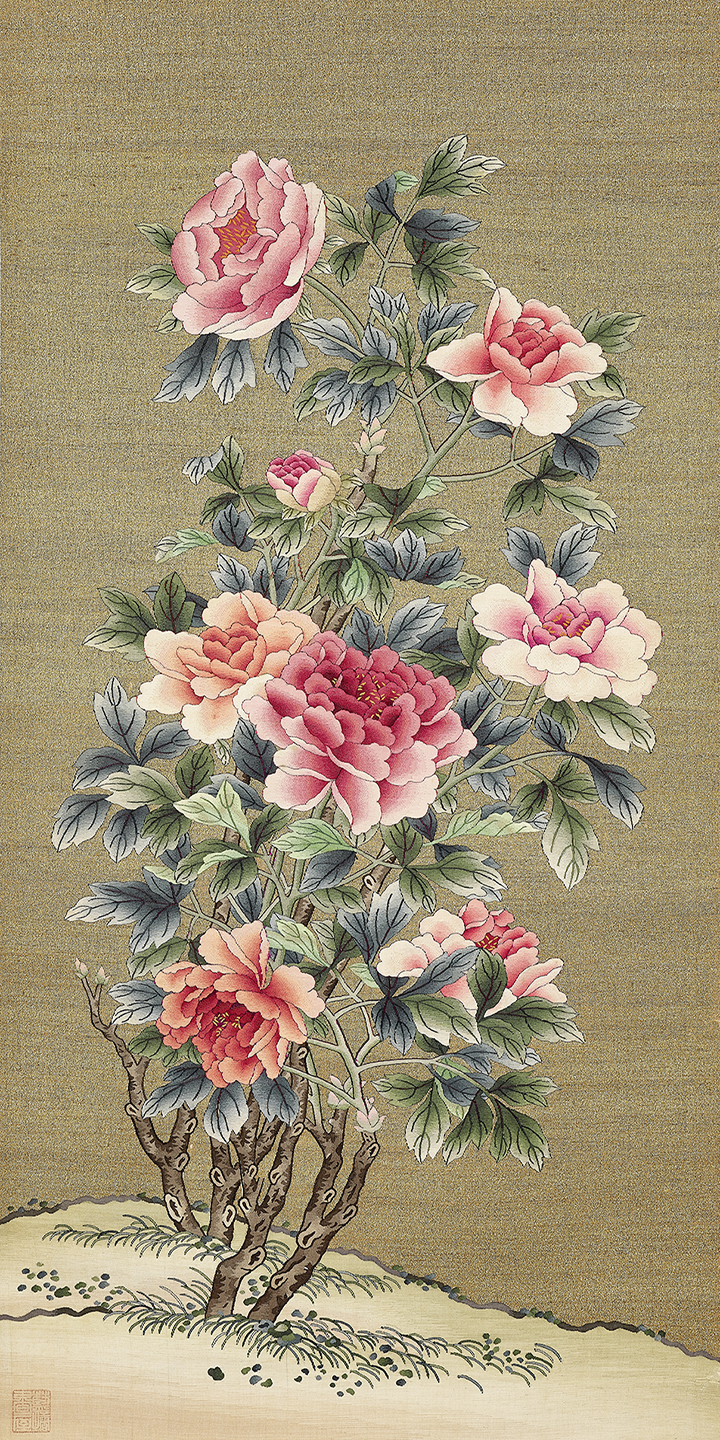Peonies
| Title | Peonies |
| Period | Qing dynasty (1644–1911), 18th century |
| Medium | Silk tapestry (kesi) with metallic threads, hanging scroll |
| Location | China |
| Dimensions | 98.8 x 54 cm |
| Collection | University Museum and Art Gallery, HKU |
| Provenance | Gift of Dr Lam Kwok Pun |
| Seal | Collector's seal Lantang shuwu |
| Catalogue | HKU.T.2008.1672 |
Recognised as the ‘King of Flowers’ and a symbol of wealth and honour, blossoming peonies express the wish huakai fugui (‘may you be prosperous’), and have traditionally been favoured on objects owned by scholars and nobles. The brightly coloured peonies and leaves were woven in various shades of red, pink, orange and green weft threads using the changduanqiang (‘long-and-short propping’) technique. Its dazzling golden ground was created with the kejin (‘silk tapestry woven with gold’) technique, in which twisted gold threads are made by wrapping a yellow silk thread with thin sheets of gold leaf in a spiral twist. This technique provides the tapestry a particularly luxurious and elegant appearance.
The seal Lantang shuwu refers to the ‘Blue Pool Studio’ owned by Li Wailuo (b. 1929), a connoisseur and art educator in Hong Kong. Having graduated from the Northcote College of Education in 1950s, Li taught design, painting and art history at the Grantham College of Education until his retirement in 1984.
